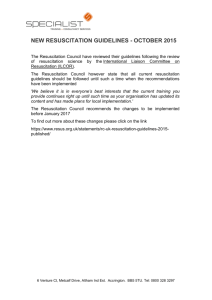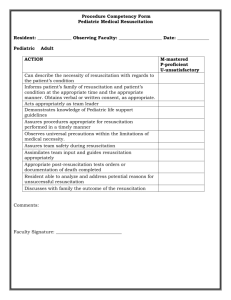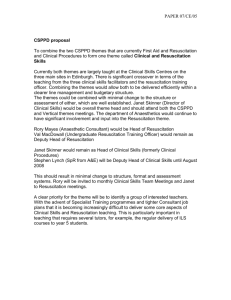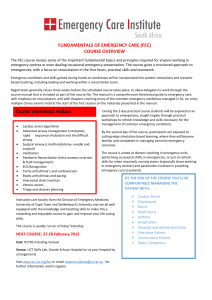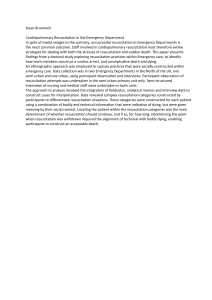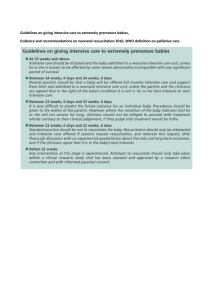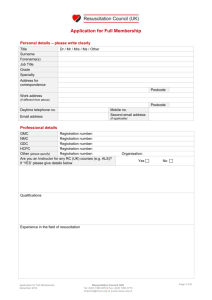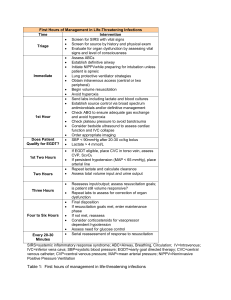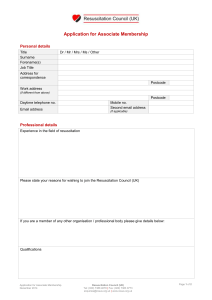Family Presence during Adult Resuscitation and Family Satisfaction
advertisement
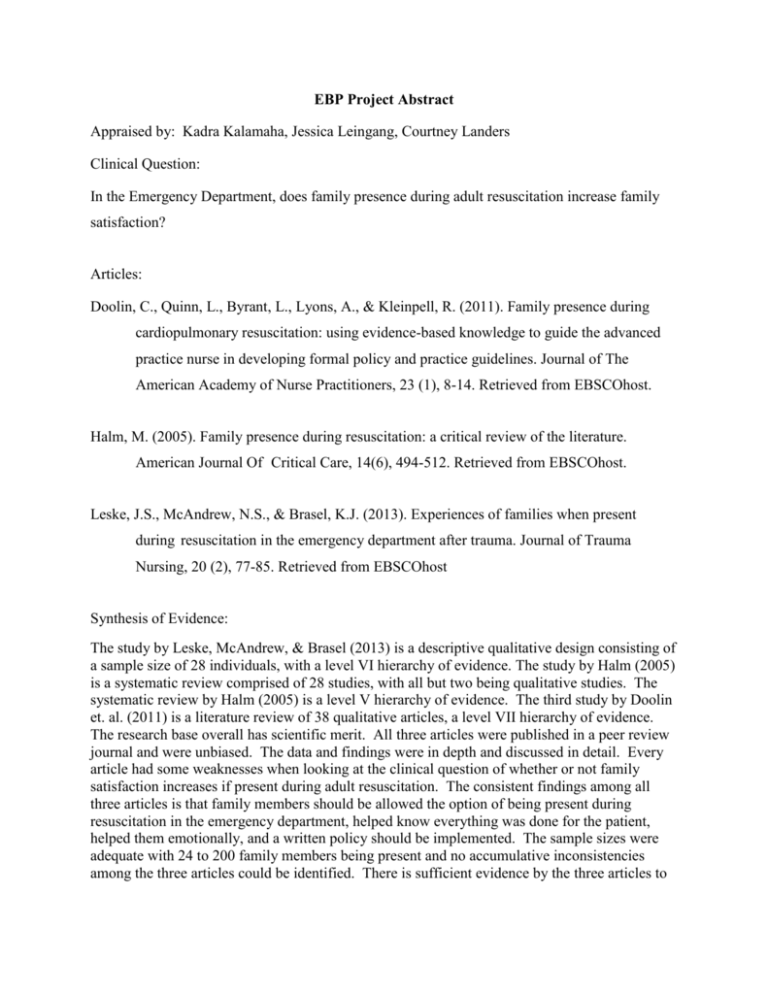
EBP Project Abstract Appraised by: Kadra Kalamaha, Jessica Leingang, Courtney Landers Clinical Question: In the Emergency Department, does family presence during adult resuscitation increase family satisfaction? Articles: Doolin, C., Quinn, L., Byrant, L., Lyons, A., & Kleinpell, R. (2011). Family presence during cardiopulmonary resuscitation: using evidence-based knowledge to guide the advanced practice nurse in developing formal policy and practice guidelines. Journal of The American Academy of Nurse Practitioners, 23 (1), 8-14. Retrieved from EBSCOhost. Halm, M. (2005). Family presence during resuscitation: a critical review of the literature. American Journal Of Critical Care, 14(6), 494-512. Retrieved from EBSCOhost. Leske, J.S., McAndrew, N.S., & Brasel, K.J. (2013). Experiences of families when present during resuscitation in the emergency department after trauma. Journal of Trauma Nursing, 20 (2), 77-85. Retrieved from EBSCOhost Synthesis of Evidence: The study by Leske, McAndrew, & Brasel (2013) is a descriptive qualitative design consisting of a sample size of 28 individuals, with a level VI hierarchy of evidence. The study by Halm (2005) is a systematic review comprised of 28 studies, with all but two being qualitative studies. The systematic review by Halm (2005) is a level V hierarchy of evidence. The third study by Doolin et. al. (2011) is a literature review of 38 qualitative articles, a level VII hierarchy of evidence. The research base overall has scientific merit. All three articles were published in a peer review journal and were unbiased. The data and findings were in depth and discussed in detail. Every article had some weaknesses when looking at the clinical question of whether or not family satisfaction increases if present during adult resuscitation. The consistent findings among all three articles is that family members should be allowed the option of being present during resuscitation in the emergency department, helped know everything was done for the patient, helped them emotionally, and a written policy should be implemented. The sample sizes were adequate with 24 to 200 family members being present and no accumulative inconsistencies among the three articles could be identified. There is sufficient evidence by the three articles to make the recommendation that family members should be allowed or at least offered to be present during resuscitation in the emergency department. Bottom Line: (findings) The evidence suggests that family presence during resuscitation does increase satisfaction for both the family and the patient. Implications for Nursing Practice: The hospitals should write up a clear formal multidisciplinary policy addressing family presence during resuscitation, and family members should be allowed the option to be present in the emergency department.

